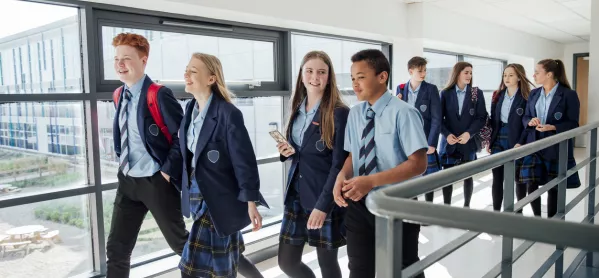- Home
- Teaching & Learning
- General
- What teaching secondary taught this primary teacher
What teaching secondary taught this primary teacher

As a teacher used to being around children aged 6 to 9, all usually eager to please and desperate for attention, the idea of teaching teenagers aged 15 and 16 did create some trepidation, I admit.
Yet, as part of my professional development, I felt it important that I achieve my QTLS, and that required some more time teaching secondary students.
So it came to pass that I stood in front of a class of Grade 10 and Grade 11 IB business students while the head of humanities observed me and then gave feedback as my supporter/mentor.
It was certainly eye-opening, with some skills easily transferable from primary to secondary, and some the other way. And some bits that clearly don’t align at all.
Differences between teaching primary and secondary
Certainly, the most sobering difference was motivation. It sounds obvious but motivating teenagers and motivating primary students are two totally different things.
For example, almost all of the primary students we teach want recognition and teacher attention. When I ask a question to the class, a bunch of hands go up and their faces tell me they are desperate to answer: with the teenagers, motionless silence.
In the moment, I tried to rely upon my reward system. This did work with other classes of teens whom I went on to teach, but not this one! What really worked with these students was direct questioning. This is actually something that my mentor/supporter would help me develop.
Another thing that stood out to me was, as a primary teacher, we break things down into small steps and re-cover key points many times to ensure they are properly understood and digested.
This approach was a bit overly simplified in the late secondary classroom. I could tell that this top set class of IB students were slightly under-challenged. This meant the lesson I had, building in time to explain things repeatedly, was actually a bit short.
Leading questions
Thinking on my feet, I tried to introduce extension activities, which worked OK but during a task I had set, I went to my mentor/supporter and said to him: “They seem bored… Do you have any advice?”
He told me briefly about sequential questioning and I tried it out. It was good but I definitely needed more practice. I can say now, after many more classes and much more practice, it is effective and useful but it was a good example of how pushing myself out of my comfort zone helped me to learn new skills and techniques. Always a useful reminder.
Where things seemed to line up more between the two environments was, perhaps surprisingly, classroom management - from the way you speak or your demeanour, to reminding students who runs the classroom.
For example, when one of the students started to speak when I was demonstrating something, I returned to the classic: “We have enough time to learn this together, however, if I have to stop because students are speaking when I am, we can run the end of the lesson at break time.” No one likes losing break time.
I also found that students off-task became on task based on my proximity. This is absolute gold in the primary classroom and although it is not as instantly effective in secondary, it still worked well - habits in primary can clearly last, it seems.
Learning new skills
Overall, for all the hurdles, it was a great experience and gave me a great amount of opportunity to develop.
I would definitely recommend to any teacher in primary or secondary that they find a chance to go and observe and teach some classes in the other context, even if just to remember the reality of how education changes from primary to secondary.
Seeing where the students have come from and where they are going is very insightful. You also get the chance to develop new strategies and embody the lifelong learner attitude that we all preach.
The questioning development I gained during this professional development endeavour has come back to primary with me nicely, helped to support my development as a post-14 teacher and has given me a whole new skillset to work with.
And going back to primary teaching after being around secondary students was a nice reminder of why it’s such a unique place to work: first of all, they all go from pretty much my height to 2ft or 3ft tall, and nobody in secondary ever asks me to tie their shoelaces!
Gregory Adam is a primary teacher at Nord Anglia Chinese International School in Shanghai. He released his first book last year, Teaching EFL, ESL & EAL. A Practitioner’s Guide
You need a Tes subscription to read this article
Subscribe now to read this article and get other subscriber-only content:
- Unlimited access to all Tes magazine content
- Exclusive subscriber-only stories
- Award-winning email newsletters
Already a subscriber? Log in
You need a subscription to read this article
Subscribe now to read this article and get other subscriber-only content, including:
- Unlimited access to all Tes magazine content
- Exclusive subscriber-only stories
- Award-winning email newsletters



